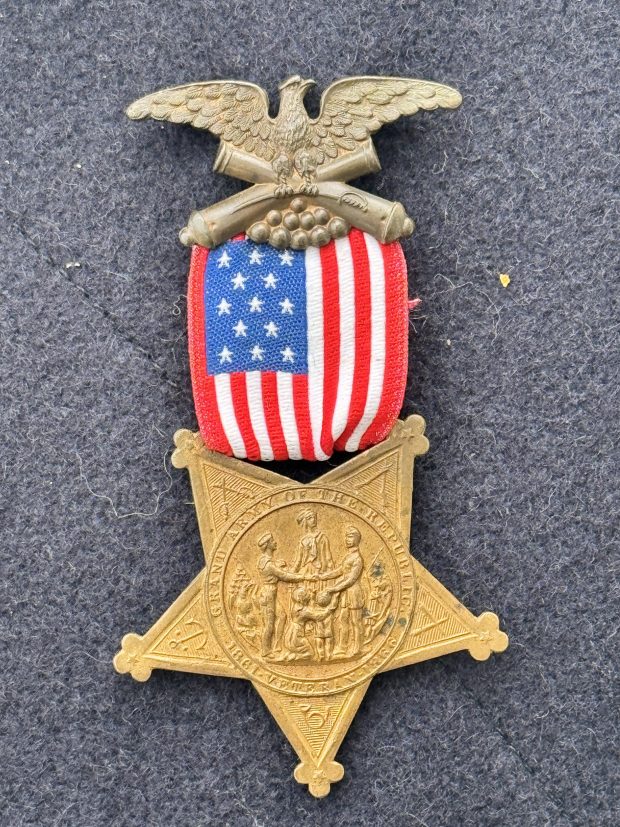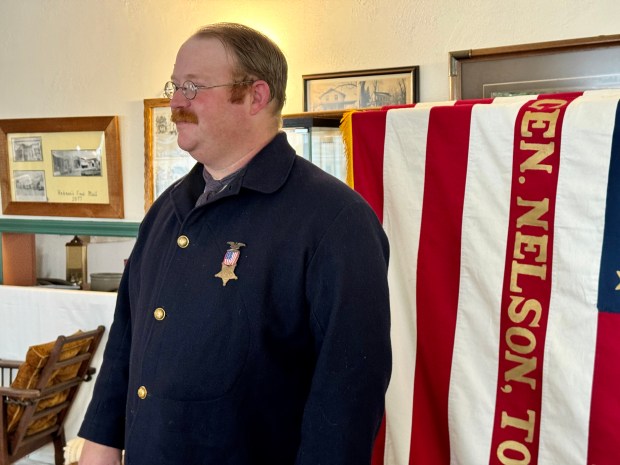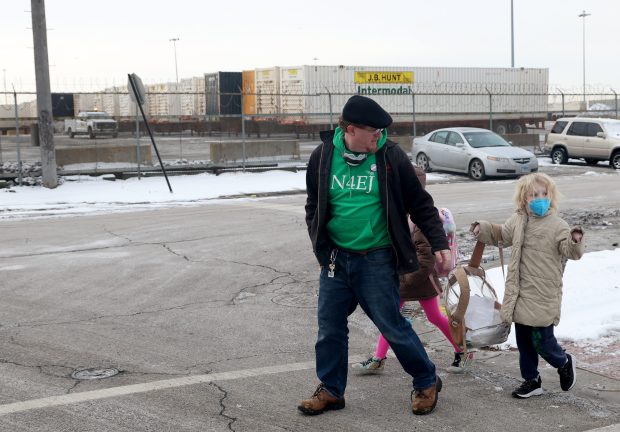The post-Civil War era was brought to life Saturday by actors portraying Grand Army of the Republic members.
Union soldiers formed the GAR in 1866 in Decatur, Illinois. Their most lasting impact on Northwest Indiana is the Memorial Opera House in Valparaiso, built as a tribute to veterans of all wars but brought about because the local GAR post pursued state funding to help build the facility.
Living history actors used by the Porter County Museum visited the Stagecoach Inn in Hebron to teach about the GAR’s history.
“They would hold large rallies and meetings,” actor Tom Wojcinski, of Hammond, said. The organization took care of widows and orphans as well as building memorials to the war.
The GAR also pushed for pensions for Civil War veterans, actor Ian Baker, of Michigan City, said. “They were some of the most dogged proponents of pensions for veterans,” including Blacks who served in the war, he said.
For GAR members, the organization served as a sort of support group, a form of therapy. “They were still probably having flashbacks,” Wojcinski said.
Like other fraternal organizations, the GAR had its own secret rituals and signs. On display at the Stagecoach Inn was a ritual book that included a cipher code so members could send each other coded messages.
Also on display was a roll book for the Hebron post, which disbanded in 1935 after members died off. “As far as we know, that’s the only bit of information we have about that post,” Baker said. The GAR hall burned to the ground, incinerating all the other records.
In Lake County, there were posts in Hammond, Gary and Crown Point. “They would name them for someone famous in the war or a soldier who died in the war,” Wojcinski said. Hammond’s was named for W.H. Calkias, Gary’s for William H. Ketcham and Crown Point’s for Col. John Wheeler.
A ritual book reads much like the Veterans of Foreign Wars’ counterpart. The VFW was formed later, after World War I. Its members included Civil War veterans as well as those of the “war to end all wars.”

The GAR was disbanded in 1953 after the members died. After the GAR faded away, as soldiers do, the Sons of Union Veterans of the Civil War organization took over the GAR’s records, Wojcinski said.
State Rep. Mike Aylesworth and his wife, Delores, visited the museum Saturday. He enjoyed going to Civil War reenactments in his youth. “I was in the 9th Indiana,” he said.
Delores chuckled while recalling the time their vehicle was stuck in the mud at one of the battlefields. “Mike was smart,” she said. “He started waving $20 bills at some farmer” to get their car towed.
The Civil War battlefields were in remote places. “It was in the spring, when the dogwoods were blooming,” Delores said. Mike realized how hard it might be to find tourist amenities, so they ended up eating at a catfish place and enjoyed a good meal – better than the hardtack the Civil War soldiers often ate during the war.
Doug Ross is a freelance reporter for the Post-Tribune.




